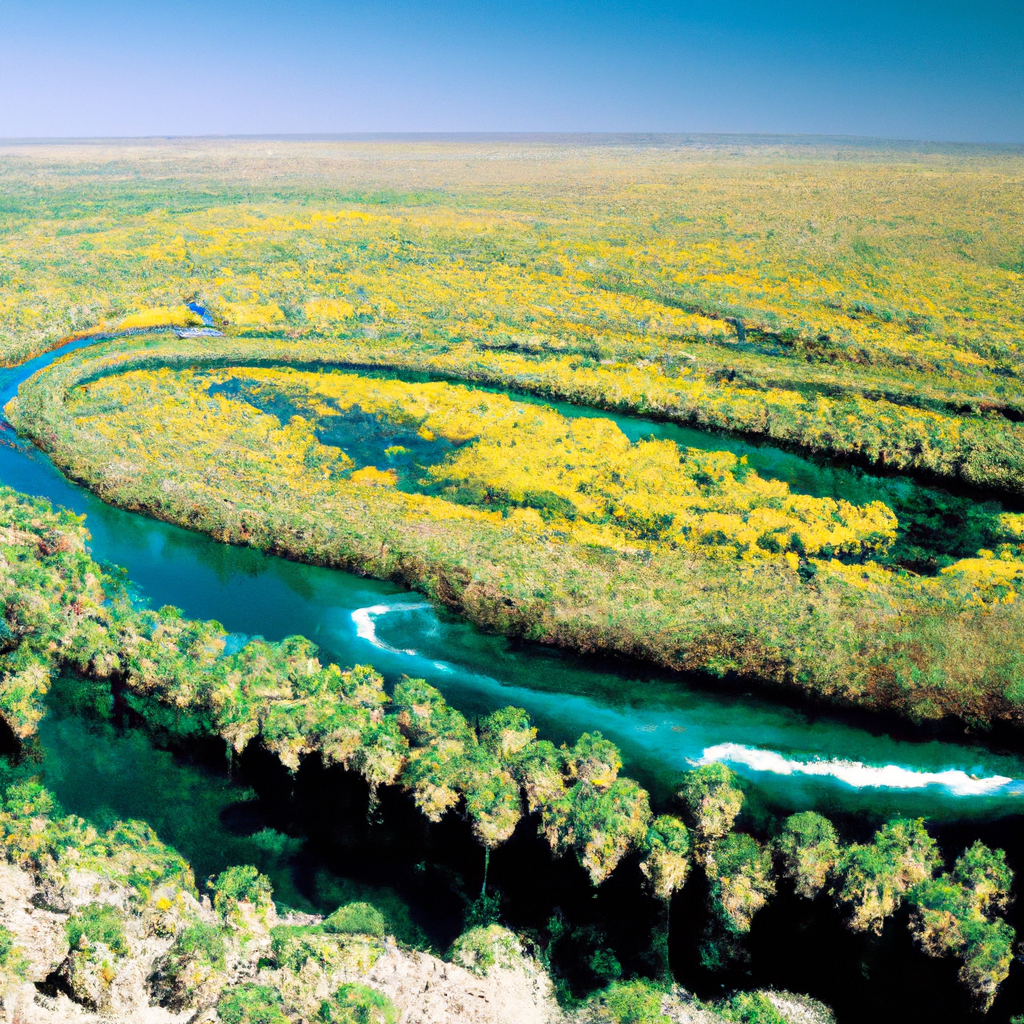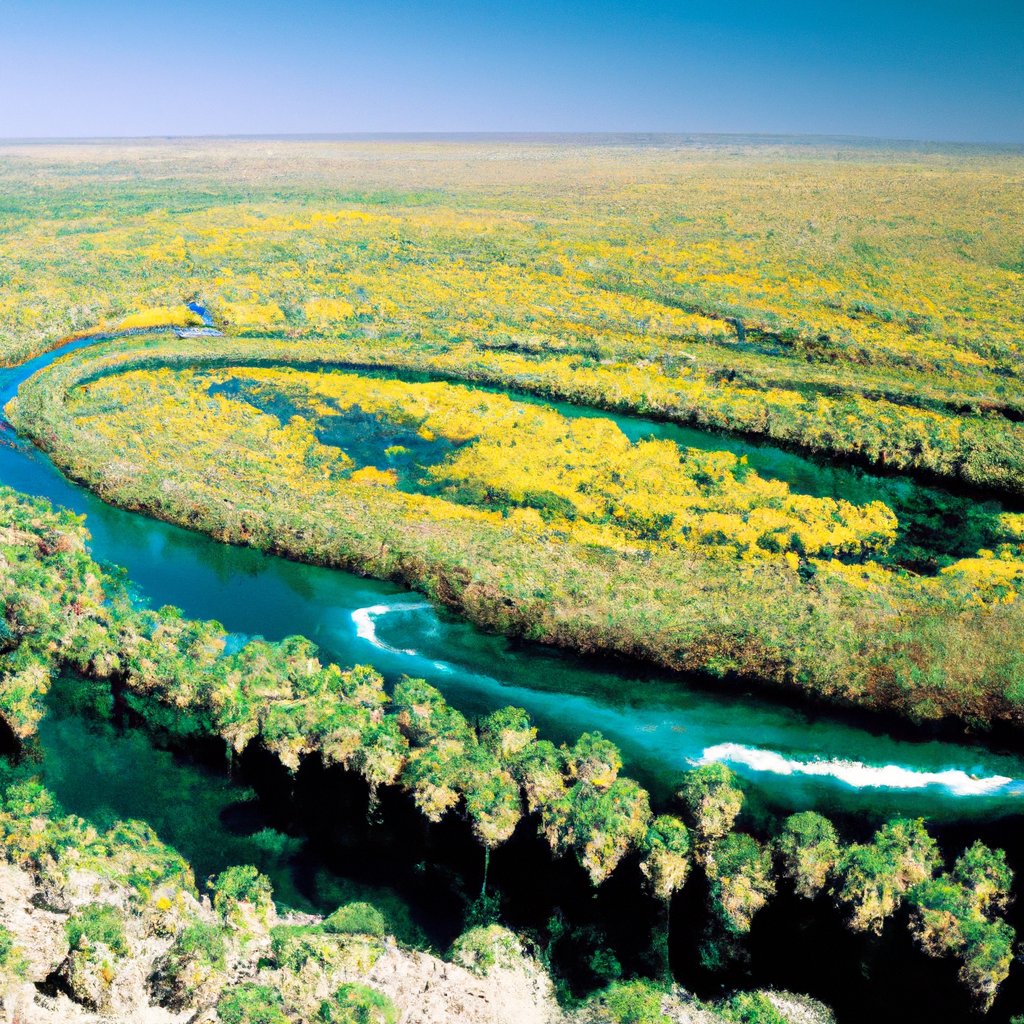Imagine stepping into a parched land of rugged beauty, where shimmering heatwaves dance across the horizon, and cacti stand defiantly amidst the arid landscape. In the heart of Mexico, hidden away from the prying eyes of travelers, lies a captivating secret: the desert oases. Like mirages amidst the barrenness, these oasis havens reveal a hidden splendor filled with lush greenery, crystal-clear turquoise waters, and an exotic array of flora and fauna. Join us as we embark on a journey to unveil the natural wonders of Mexico’s desert oases, where the unlikeliest of landscapes showcases an enchanting paradise within.
1. The Magical Oases of Mexico
Mexico, with its diverse and captivating landscapes, is home to some truly magical places that seem to defy the harsh reality of the arid desert. These places are known as desert oases, and they are hidden gems nestled in the midst of Mexico’s arid landscapes. In this article, we will explore the definition, rarity, and significance of desert oases, focusing specifically on the ones found in Mexico.
1.1 The Definition of a Desert Oasis
A desert oasis is typically defined as a lush and fertile area surrounded by desert vegetation and characterized by an abundant water source. It serves as a haven of life in an otherwise barren and inhospitable environment. The contrast between the vibrant greenery and the desolate desert further adds to the allure of these oases.
1.2 The Rarity and Significance of Desert Oases
Desert oases are rare and precious natural wonders. The scarcity of water in deserts makes finding a sustainable source of water a challenge for many species, including humans. Consequently, oases become a vital resource for both wildlife and human communities, serving as a refuge from the harsh conditions of the desert. The significance of these oases extends beyond their life-sustaining capabilities, as they also play a crucial role in maintaining ecosystem balance and preserving biodiversity.
1.3 Mexico’s Abundance of Desert Oases
Mexico is blessed with an abundance of desert oases, offering a diverse array of landscapes and experiences for visitors to explore. From the northern deserts to the southern regions, Mexico’s desert oases can be found in various locations, each with its unique geographic characteristics, climate, and cultural significance. Now, let’s delve into the geographic features of these Mexican desert oases.
2. The Geographic Characteristics
2.1 The Geographic Location of Mexico’s Desert Oases
Mexico’s desert oases are scattered throughout the country and can be found in different states such as Oaxaca, Coahuila, and San Luis Potosí, just to name a few. The geographic location of these oases is varied, with some nestled in mountainous regions, while others are nestled in the valleys between sand dunes. This diversity in location gives each oasis its distinct charm and makes the journey to discover them all the more exciting.
2.2 The Diversity of Mexican Desert Oases
What makes Mexico’s desert oases truly remarkable is the striking diversity in their geographic characteristics. Some oases feature towering waterfalls cascading down natural rock formations, while others boast crystal-clear lakes that offer a serene and reflective oasis. The variation in vegetation types and the unique geological formations within these oases make each one a feast for the senses. Whether you prefer sandy dunes or lush palm trees, Mexico’s desert oases offer a captivating experience for every traveler.

3. The Climate and Weather
3.1 The Extreme Aridity of Mexican Deserts
Mexico’s desert regions are characterized by extreme aridity, with minimal rainfall and high temperatures. This arid climate creates a challenging environment for life to thrive. However, desert oases are a testament to nature’s ingenuity and resilience, as they manage to flourish amidst these harsh conditions, providing a stark contrast to the surrounding desert landscapes.
3.2 The Impact of Climate Change on Desert Oases
While desert oases have adapted to survive in arid environments, the rapid changes brought about by climate change pose a significant threat to their existence. Rising temperatures, changing rainfall patterns, and increased water scarcity can disrupt the delicate balance that sustains these oases. It is crucial to recognize the importance of preserving these ecosystems and take action to mitigate the effects of climate change to ensure their survival for future generations.
4. Flora and Fauna
4.1 Unique Plant Adaptations in Desert Oases
The flora in Mexico’s desert oases consists of a wide range of unique plant species that have evolved to survive in arid conditions. These plants have developed remarkable adaptations to conserve water, such as succulent leaves and extensive root systems that allow them to tap into deep water sources. Cacti, agaves, and various species of palm trees are among the fascinating plants that can be found in these oases.
4.2 Animal Species Thriving in Desert Oases
Desert oases provide a vital habitat for a diverse range of animal species, including reptiles, birds, and mammals. Many of these species have also evolved adaptations to cope with the extreme desert conditions. From colorful lizards and desert tortoises to migratory birds and elusive desert foxes, the animal life in these oases is rich and astonishing. Exploring these oases offers a chance to witness the wonders of nature in action and understand the delicate balance between species and their environment.

5. Cultural Significance
5.1 Historical Importance of Desert Oases in Mexico
Beyond their natural beauty and ecological significance, desert oases hold a deep cultural and historical importance in Mexico. For centuries, these oases provided a lifeline for indigenous communities, offering a sustainable water source and fertile land for agriculture. Ancient civilizations, such as the Zapotecs and the Aztecs, recognized the value of these oases and established settlements around them, leaving behind traces of their rich cultural heritage.
5.2 Indigenous Communities and Desert Oases
Present-day indigenous communities in Mexico have a strong connection to desert oases, as they continue to rely on these precious resources for their survival. These communities have developed a profound understanding of the land and its rhythms, passing down traditional knowledge and sustainable practices from generation to generation. Visiting these oases provides an opportunity to learn from the wisdom of these communities and appreciate the cultural significance of these natural wonders.
6. Famous Desert Oases in Mexico
6.1 Hierve el Agua – Oaxaca
Hierve el Agua, located in the state of Oaxaca, is one of Mexico’s most iconic desert oases. This unique natural wonder features petrified waterfalls and breathtaking mineral-rich pools that give the illusion of frozen cascades. The turquoise waters of Hierve el Agua, set against the dramatic backdrop of the surrounding mountains, create a picturesque oasis that is a must-visit for any traveler.
6.2 Cuatro Ciénegas – Coahuila
Cuatro Ciénegas, located in the state of Coahuila, is a true desert oasis hidden within the Chihuahuan Desert. This oasis is home to a series of crystal-clear pools and marshes, teeming with diverse plant and animal life. The unique geological formations and the presence of endemic species make Cuatro Ciénegas an ecological treasure. Exploring the wetlands and witnessing the vibrant biodiversity of this oasis is an experience not to be missed.
6.3 Real de Catorce – San Luis Potosí
Real de Catorce, nestled in the state of San Luis Potosí, presents a different kind of desert oasis with its enchanting atmosphere and intriguing history. This ghost town turned vibrant cultural destination is surrounded by desert landscapes and features a nearby oasis known as the Ojo de Agua de la Media Luna. The refreshing spring, surrounded by towering cacti and stunning rock formations, provides a tranquil retreat for visitors seeking an oasis of calm amidst the arid beauty of Real de Catorce.
7. Conservation Efforts
7.1 Protecting Mexico’s Desert Oases
Recognizing the ecological and cultural significance of desert oases, dedicated conservation efforts are being made to ensure their preservation. Government agencies, non-profit organizations, and local communities play a crucial role in protecting these oases through measures such as promoting sustainable water management, enforcing regulations against destructive activities, and raising awareness about the importance of conservation. Collaboration between different stakeholders is vital to ensure the long-term survival of these fragile ecosystems.
7.2 Eco-Tourism and Sustainable Development
Eco-tourism has emerged as a sustainable approach to promote the exploration of desert oases while minimizing the impact on the environment. By establishing responsible tourism practices that prioritize the well-being of the oases and the local communities, eco-tourism initiatives provide opportunities for visitors to appreciate the beauty of these oases while contributing to their conservation. It is essential to support these initiatives and choose responsible tour operators who prioritize sustainability and cultural preservation.
8. Exploring Desert Oases
8.1 Activities and Attractions
Exploring Mexico’s desert oases offers a plethora of activities and attractions for adventurers. From hiking along scenic trails to bird-watching and wildlife spotting, there are countless opportunities to immerse yourself in the beauty of these oases. Additionally, many oases provide the chance to take a refreshing dip in their inviting waters, providing a welcome respite from the desert heat. Explorers seeking a tranquil experience can simply relax amidst the serenity of these oases and soak in the awe-inspiring landscapes.
8.2 Recommended Travel Routes
To fully appreciate the diversity of Mexico’s desert oases, it is recommended to plan a travel route that allows you to visit multiple oases across different regions. Starting in Oaxaca, you can experience the breathtaking beauty of Hierve el Agua before heading north to explore the dramatic landscapes of Coahuila. From there, a journey to San Luis Potosí will lead you to Real de Catorce, where you can discover the historical charm and natural wonders of the region. This travel route showcases the unique characteristics of each oasis and provides a comprehensive desert oasis experience.
9. Challenges and Threats
9.1 Water Scarcity and Desertification
Water scarcity is a significant challenge faced by desert oases in Mexico and around the world. The rising demand for water, coupled with the effects of climate change, can deplete the already limited water resources in these oases. Additionally, the spread of desertification, mainly caused by human activities such as deforestation and unsustainable agricultural practices, further exacerbates the challenges faced by these delicate ecosystems. It is crucial to address these issues through sustainable water management and land-use practices to protect the future of desert oases.
9.2 Human Impact on Desert Oases
Human activities, including tourism, can have both positive and negative impacts on desert oases. While responsible tourism can contribute to their conservation and provide economic opportunities for local communities, uncontrolled tourism can lead to environmental degradation and disruption of fragile ecosystems. It is essential for visitors to respect the natural and cultural values of these oases, adhere to guidelines set by conservation organizations, and support initiatives that prioritize sustainable development in order to minimize negative impacts.
10. Conclusion
Mexico’s desert oases are captivating and enchanting destinations that hold immense ecological, cultural, and historical significance. From their unique plant and animal life to their striking landscapes and the crucial role they play in sustaining life in the desert, these oases offer an extraordinary experience for those who are willing to explore them. However, their survival is threatened by climate change, water scarcity, and human activities. It is our collective responsibility to protect and preserve these natural wonders for future generations, ensuring that the magic of Mexico’s desert oases continues to captivate and inspire. So, embark on this journey of discovery, immerse yourself in the hidden splendor of Mexico’s desert oases, and let the magic unfold before your eyes.
